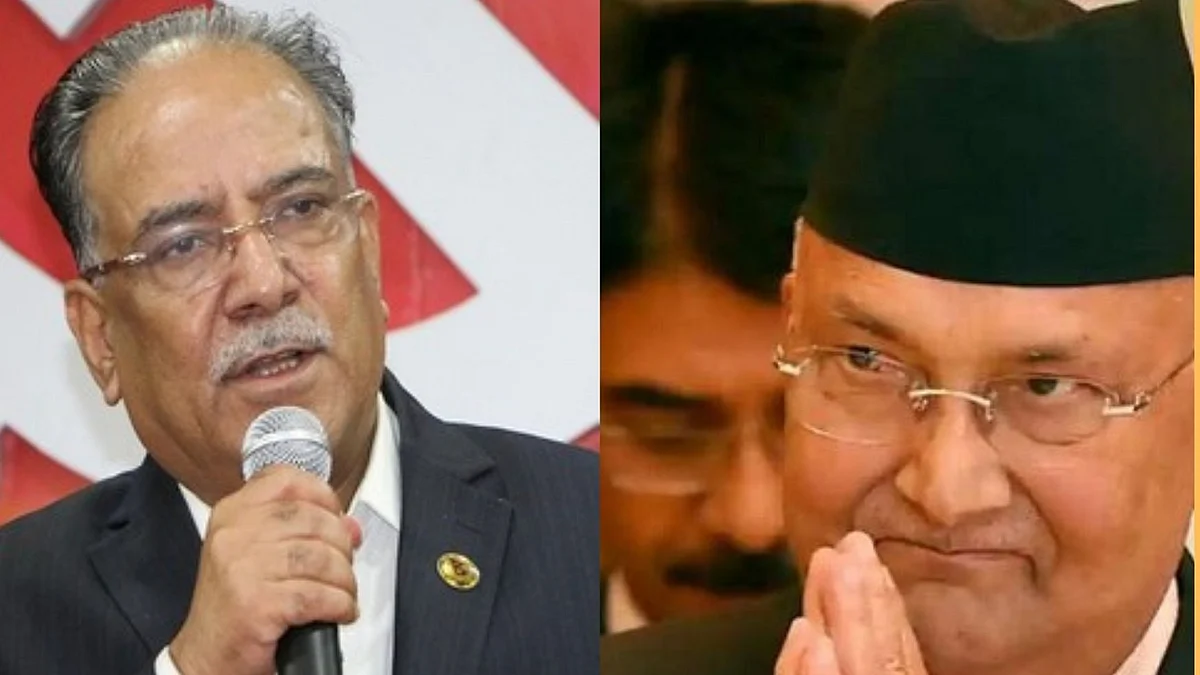Nepal’s political turmoil: India needs to closely monitor without getting involved
Nepal cannot afford to antagonize either of the two big neighbours it is sandwiched between. Kathmandu’s national interest demands that it should be closer to New Delhi than to Beijing

Nepal is being ruled by a political party which does not exist legally. Sounds paradoxical but is true. The Nepal Communist Party was born out of the merger of two communist parties – the Communist Party of Nepal (United Marxist-Leninist) led by the present prime minister K. P. Sharma Oli and the Communist Party of Nepal led by Pushpa Kamal Dahal, better known as Prachanda.
The two parties merged on May 17, 2018 to form the Nepal Communist Party and came to be the ruling party. The merger was formalized but the bitter factional fight between the two factions never ceased. For a long time the party was on the verge of a split but the split was never formalized. Until Sunday, March 7, that is.
On that day the Supreme Court of Nepal nullified the merger of the two CPs. A division bench of two judges took away the name ‘Nepal Communist Party’. The ruling came as a sequel to a case filed by one Rishi Kattel who claimed to be the leader of the Nepal Communist Party that was formed before the merger of the two ruling communist parties. He said that the “Nepal Communist Party” following the merger of two CPs had “copied” his party’s name. The Supreme Court held the name NCP invalid and revived the two original (pre-merger) parties.
Oli lost no time in reviving his old party CPI (UML) and asserted that he would enter the Singha Durbar (the seat of government) within 20 months with a two-thirds majority after winning the next general elections. That does not seem to be a certainty. The political situation in the country is in a flux and no one can predict what will happen twenty months later.
The main opposition party is the Nepali Congress. Once it was the premier political party in the country. When the Oli Government was introducing Bills in Parliament to curb civil liberty and press freedom, the Nepali Congress took an ambivalent stand. It did not come out clearly and unequivocally against the undemocratic Bills. There are also internal differences in the Nepali Congress.
In the present 275-member Nepali Parliament (Upper House), the Nepal Communist Party (now dissolved by Supreme Court and both factions together) has 174 members, the Nepali Congress 63 and the People’s Socialist Party Nepal, 34. For either faction of the CPN to form government now, the support of the Nepali Congress is a must but the party (NC) has not laid its cards on the table. Its stand on government formation remains ambivalent.
The merger of the two communist parties was a marriage of convenience as subsequent developments have proved. As a sequel to the internal party feud, Prime Minister Oli [originally belonging to CPN (UML)] got the Parliament dissolved and called for fresh elections. The Supreme Court held the dissolution unconstitutional and restored Parliament. Then it dissolved the ruling party – CPN.
After this, Oli revived his old party, CPN (UML). China tried hard to avert a split but it failed. The differences between Oli and Prachanda are irreconcilable, though no one knows what exactly are the differences and their causes. But the differences got reflected in long thesis and counter-thesis presented by both factions before the Central Committee. But the dispute remained unresolved.
Before January, 2023, when the next general election is due, both Oli and Prachanda factions will try their level best to increase their respective strengths so that each is able to form the government on its own. But this seems unlikely. Neither faction will be able to win a parliamentary majority on its own, because their respective support bases remain more or less intact and loyal to their leaders.
The Nepali Congress will have to make up its mind as to which of the two factions of the communists it will extend its support to, to form a stable government.
Unlike China, India has appeared to keep itself aloof from Nepal politics, calling it Nepal’s internal problem. Beijing’s open interference in the internal affairs of Nepal during the internal crisis of the CPN has not gone down well with the Nepali people.
Nepal’s problem is that it cannot antagonize either of the two big neighbours it is sandwiched between. Their national interest demands that they should be closer to New Delhi than to Beijing. India’s concern is that Nepal does not get very close to China, endangering India’s security.
Nepal’s unilateral claim on areas of Limpiyadhura and Kalapani and the Lipulekh Pass, showing these areas as its own in hastily brought out maps and getting these ratified by the Nepal Parliament was a big irritant in Indo-Nepal relations. This could have been easily avoided.
The 330 sq. km. area here is of strategic importance to India. For example the Lipulekh Pass is the shortest land route from India to China. Why should Kathmandu unnecessarily tread on India’s corns at somebody’s behest? Perhaps this was necessitated by the compulsions of Nepal’s internal politics. But Nepali politicians should realize that making India the favourite whipping boy will harm Nepal’s own interest in the long run.
(IPA Service)
Views are personal
Follow us on: Facebook, Twitter, Google News, Instagram
Join our official telegram channel (@nationalherald) and stay updated with the latest headlines